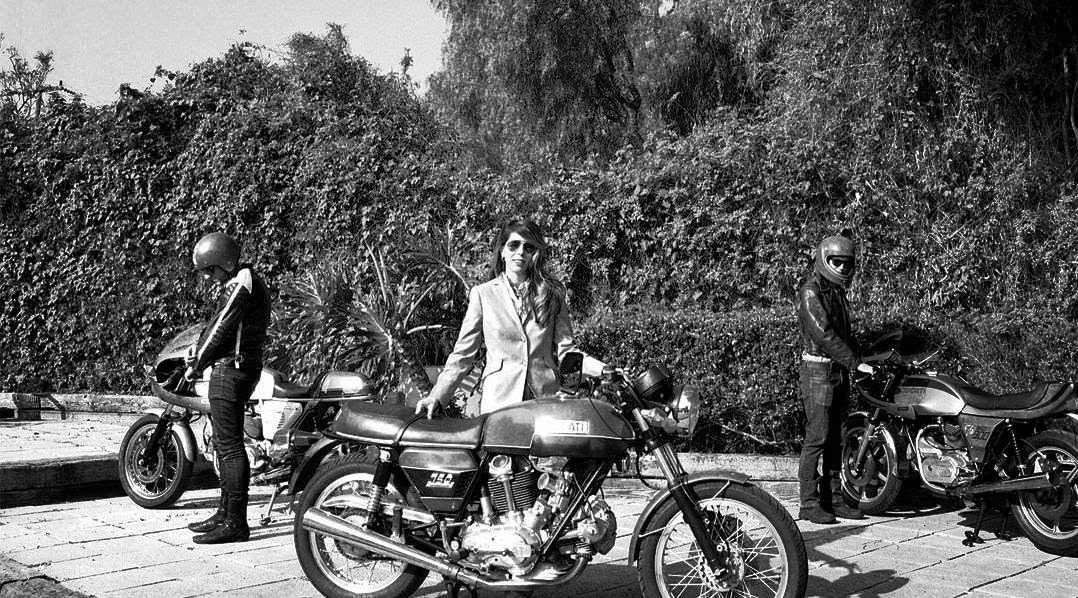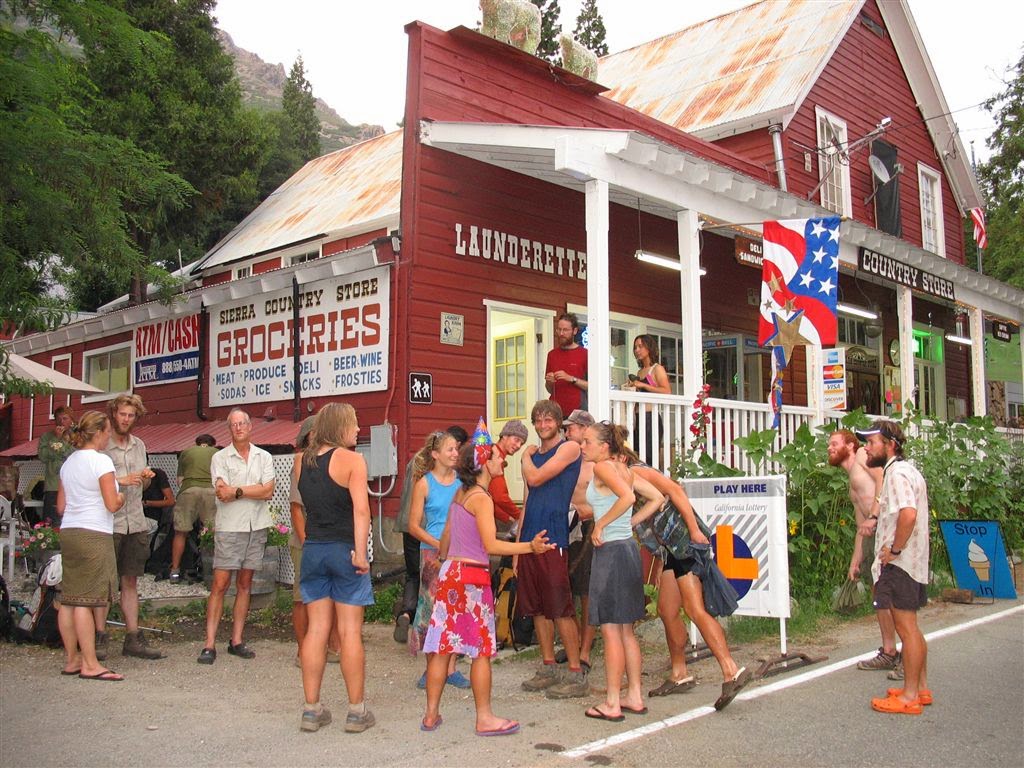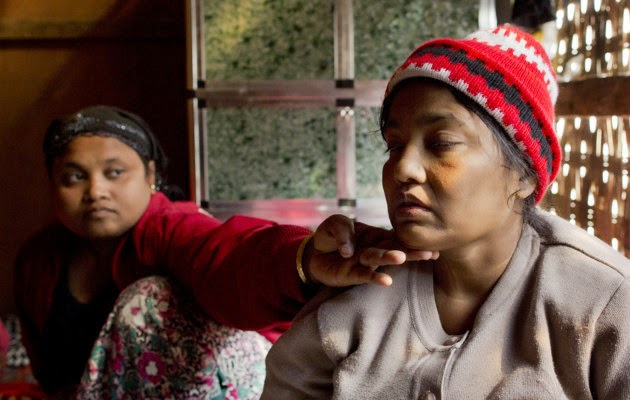 |
| The nominees are... |
UPDATE: The final selections are listed on the "Coming Up!" page. Click the link in the upper left hand corner of the home page.
Fiction (in no particular order)
The Orphan Train by Christina Baker Kline, publication 2013, pages 278, available in paperback.
Between 1854 and 1929, so-called orphan trains ran regularly from the cities of the East Coast to the farmlands of the Midwest, carrying thousands of abandoned children whose fates would be determined by luck or chance. Would they be adopted by a kind and loving family, or would they face a childhood and adolescence of hard labor and servitude? As a young Irish immigrant, Vivian Daly was one such child, sent by rail from New York City to an uncertain future a world away. Returning east later in life, Vivian leads a quiet, peaceful existence on the coast of Maine, the memories of her upbringing rendered a hazy blur. But in her attic, hidden in trunks, are vestiges of a turbulent past. Seventeen-year-old Molly Ayer knows that a community-service position helping an elderly widow clean out her attic is the only thing keeping her out of juvenile hall. But as Molly helps Vivian sort through her keepsakes and possessions, she discovers that she and Vivian aren’t as different as they appear. A Penobscot Indian who has spent her youth in and out of foster homes, Molly is also an outsider being raised by strangers, and she, too, has unanswered questions about the past. Moving between contemporary Maine and Depression-era Minnesota,
Orphan Train is a powerful tale of upheaval and resilience, second chances, and unexpected friendship.
The Fault in Our Stars by John Green, publication 2012, pages 352, available in paperback.
Amazon Best Books of the Month, January 2012: In
The Fault in Our Stars, John Green has created a soulful novel that tackles big subjects—life, death, love—with the perfect blend of levity and heart-swelling emotion. Hazel is sixteen, with terminal cancer, when she meets Augustus at her kids-with-cancer support group. The two are kindred spirits, sharing an irreverent sense of humor and immense charm, and watching them fall in love even as they face universal questions of the human condition—How will I be remembered? Does my life, and will my death, have meaning?—has a raw honesty that is deeply moving.
Wonder by R.J. Palacio, publication 2012, pages 313, cannot verify that this is available in paperback.
Wonder by R. J. Palacio tells the story of ten-year-old August. The boy was born with a face that horrifies most who look upon it. Over the years, he had countless surgeries, so he was home-schooled. Now, he's about to enter the fifth grade in a regular school. This story is told from his perspective as well as from his sister's, her boyfriend's and friends' perspectives.
Americanah by Chimamanda Ngozi Adichie, publication 2013, pages 608, available in paperback. To the women in the hair-braiding salon, Ifemelu seems to have everything a Nigerian immigrant in America could desire, but the culture shock, hardships, and racism she’s endured have left her feeling like she has “cement in her soul.” Smart, irreverent, and outspoken, she reluctantly left Nigeria on a college scholarship. Her aunty Uju, the pampered mistress of a general in Lagos, is now struggling on her own in the U.S., trying to secure her medical license. Ifemelu’s discouraging job search brings on desperation and depression until a babysitting gig leads to a cashmere-and-champagne romance with a wealthy white man. Astonished at the labyrinthine racial strictures she’s confronted with, Ifemelu, defining herself as a “Non-American Black,” launches an audacious, provocative, and instantly popular blog in which she explores what she calls Racial Disorder Syndrome. Meanwhile, her abandoned true love, Obinze, is suffering his own cold miseries as an unwanted African in London.
The Ocean at the End of the Lane by Neil Gaiman, publication 2013, pages 181, available in paperback.
An Amazon Best Book of the Month, June 2013: Forty years ago, our narrator, who was then a seven-year-old boy, unwittingly discovered a neighboring family’s supernatural secret. What happens next is an imaginative romp through otherwordly adventure that could only come from Gaiman's magical mind. Childhood innocence is tested and transcended as we see what getting between ancient, mystic forces can cost, as well as what can be gained from the power of true friendship. The result is a captivating tale that is equal parts sweet, sad, and spooky.
Oleander Girl by Chitra Banerjee Divakaruni, publication 2013, pages 304, available in paperback.
Beloved by critics and readers, Chitra Banerjee Divakaruni has been hailed by Junot Díaz as a "brilliant storyteller" and by People magazine as a "skilled cartographer of the heart." Now, Divakaruni returns with her most gripping novel yet. Orphaned at birth, seventeen-year-old Korobi Roy has enjoyed a sheltered childhood with her adoring grandparents. But she is troubled by the silence that surrounds her parents' death and clings fiercely to her only inheritance from them: the love note she found in her mother's book of poetry. Korobi dreams of one day finding a love as powerful as her parents', and it seems her wish has come true when she meets the charming Rajat, the only son of a high-profile family. But shortly after their engagement, a heart attack kills Korobi's grandfather, revealing serious financial problems and a devastating secret about Korobi's past. Shattered by this discovery and by her grandparents' betrayal, Korobi undertakes a courageous search across post-9/11 America to find her true identity. Her dramatic, often startling journey will, ultimately, thrust her into the most difficult decision of her life.
The Accursed by Joyce Carol Oates, publication 2013, pages 704, available in paperback.
High-strung and ambitious Woodrow Wilson is the president of Princeton. Anxious over festering conflicts and appalled by what he learns about his distant relative and protégé after the nearby lynching of an African American man and his pregnant sister, Wilson seeks advice from retired Reverend Winslow Slade, who would rather think about the upcoming wedding of his granddaughter, Annabel. But this fair maiden is in danger of falling under the spell of a handsome stranger with otherworldly eyes. As an elite WASP enclave finds itself caught in the grip of inexplicable terror, readers will be bewitched by a fantastically dramatic, supremely imaginative plot rife with ghosts, vampires, demons, and human folly.
The Orchardist by Amanda Coplin, publication 2012, pages 448, available in paperback.
In her stunningly original and haunting debut novel, Amanda Coplin evokes a powerful sense of place, mixing tenderness and violence as she spins an engrossing tale of a solitary orchardist who provides shelter to two runaway teenage girls in the untamed American West, and the dramatic consequences of his actions.
A Room With a View by E.M. Forster, publication1908, pages 172, available in paperback.
The story begins in Florence, Italy, where two English women, Lucy Honeychurch and her spinster cousin Charlotte Bartlett, are at a hotel full of other English tourists. They are displeased with their rooms, which don’t have a pleasant view from their windows, but a pair of unconventional fellow guests, Mr. Emerson and his son, George, offers to switch rooms with them. This sparks a whole discussion of what is proper and what is improper, a dialogue that continues throughout the book. Eventually, the women take the Emersons’ offer, only after a visiting pastor, Mr. Beebe, convinces Charlotte that it’s okay.
Seating Arrangements by Maggie Shipstead, publication 2012, pages 320, available in paperback.
Maggie Shipstead’s irresistible social satire, set on an exclusive New England island over a wedding weekend in June, provides a deliciously biting glimpse into the lives of the well-bred and ill-behaved.
And the Mountains Echoed by Khaled Hosseini, publication 2013, pages 448, available in paperback.
And the Mountains Echoed is the third novel by Afghan-American author Khaled Hosseini. It deviates from Hosseini's style in his first two works through his choice to avoid focusing on any one character. Rather, the book is written similarly to a collection of short stories, with each of the nine chapters being told from the perspective of a different character. The book's foundation is built on the relationship between ten-year-old Abdullah and his three-year-old sister Pari and their father's decision to sell her to a childless couple in Kabul, an event that ties the various narratives together.
Nonfiction (in no particular order)
The Dressmaker of Khair Khana by Gayle Tzemach Lemmon, publication 2011, pages 256, available in paperback.
The
story begins in 1996 on the day that Kamila graduates with her teaching
certificate, and the day the Taliban first arrive in Kabul, capital of
Afghanistan and home to the Sidiqi family. Inspired by the sharia law of
Islam, it would become the doctrine of the Taliban to completely
isolate women from society. Women were not permitted to work, attend
school, or even leave the house without a male relative, or mahram.
Kamila’s father and brothers do not escape persecution either, and are
soon forced to flee the city. Unable to teach and desperate to support
her family, Kamila masters the art of dressmaking and passes on the
skills to her younger sisters. In order to find work for the budding
business, Kamila frequently makes the dangerous trek to the market and
meets with the owners of local dress shops. Soon the business is
growing, and Kamila sees an opportunity to help other women in her
community. With the help of her sisters, she opens a tailoring school in
their home to teach women how to sew and to give them work once they
completed their training. At a time of almost insurmountable poverty,
she is able to employ nearly one hundred of her friends and neighbors,
all the while escaping the scrutiny of the Taliban.
Updike by Adam Begley, publication 2014, pages 592, not due out in paperback until March 2015.
Updike is Adam Begley’s masterful, much-anticipated biography of one of the most celebrated figures in American literature: Pulitzer Prize-winning author John Updike—a candid, intimate, and richly detailed look at his life and work. In this magisterial biography, Adam Begley offers an illuminating portrait of John Updike, the acclaimed novelist, poet, short-story writer, and critic who saw himself as a literary spy in small-town and suburban America, who dedicated himself to the task of transcribing “middleness with all its grits, bumps and anonymities.”
Carsick: John Waters Hitchhikes across America by John Waters, publication 2014, pages 336, not due out in paperback until June 2015.
In
Carsick, director and counterculture hero John Waters hitchhikes across America and discovers that he can depend on the kindness of strangers, even in flyover country. If America has finally come to accept, if not fully embrace, huge swaths of its outlier population, we owe thanks to director John Waters, whose disarmingly funny films, from “Polyester” to “Hairspray” to “Pink Flamingos,” flipped our stereotypes on their sides and replaced them with real humans, albeit, in lead “actress” Divine’s case, with a little more mascara than we might have applied. In
Carsick, Waters has taken his famously bent perspective on the road to hitchhike, at age 66 (!) from his Baltimore house to his San Francisco co-op apartment.
Unbroken by Laura Hillenbrand, publication 2010, pages 528, available in paperback (!!!!!).
In boyhood, Louis Zamperini was an incorrigible delinquent. As a teenager, he channeled his defiance into running, discovering a prodigious talent that had carried him to the Berlin Olympics. But when World War II began, the athlete became an airman, embarking on a journey that led to a doomed flight on a May afternoon in 1943. When his Army Air Forces bomber crashed into the Pacific Ocean, against all odds, Zamperini survived, adrift on a foundering life raft. Ahead of Zamperini lay thousands of miles of open ocean, leaping sharks, thirst and starvation, enemy aircraft, and, beyond, a trial even greater. Driven to the limits of endurance, Zamperini would answer desperation with ingenuity; suffering with hope, resolve, and humor; brutality with rebellion. His fate, whether triumph or tragedy, would be suspended on the fraying wire of his will.
The Glass Castle: A Memoir by Jeannette Wells, publication 2005, pages 288, available in paperback.
Jeannette Walls grew up with parents whose ideals and stubborn nonconformity were both their curse and their salvation. Rex and Rose Mary Walls had four children. In the beginning, they lived like nomads, moving among Southwest desert towns, camping in the mountains. Rex was a charismatic, brilliant man who, when sober, captured his children's imagination, teaching them physics, geology, and above all, how to embrace life fearlessly. Rose Mary, who painted and wrote and couldn't stand the responsibility of providing for her family, called herself an "excitement addict." Cooking a meal that would be consumed in fifteen minutes had no appeal when she could make a painting that might last forever. Later, when the money ran out, or the romance of the wandering life faded, the Walls retreated to the dismal West Virginia mining town—and the family—Rex Walls had done everything he could to escape. He drank. He stole the grocery money and disappeared for days. As the dysfunction of the family escalated, Jeannette and her brother and sisters had to fend for themselves, supporting one another as they weathered their parents' betrayals and, finally, found the resources and will to leave home.






















































